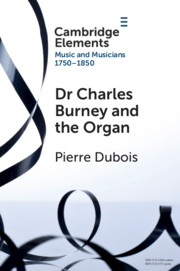Element contents
Dr. Charles Burney and the Organ
Published online by Cambridge University Press: 13 February 2021
Summary
- Type
- Element
- Information
- Online ISBN: 9781108973212Publisher: Cambridge University PressPrint publication: 11 March 2021
Bibliography
Primary Sources
Secondary Sources
- 4
- Cited by



